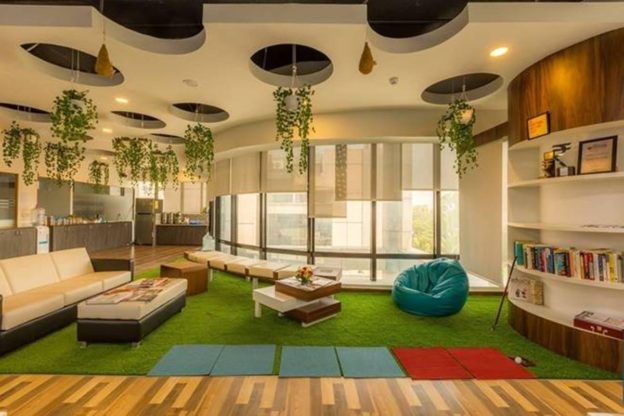The new normal will require commercial real estate players to foster the needs of corporates, entrepreneurs and even budding professionals.
Mumbai presents a myriad of possibilities for investment and growth to NRIs, HNIs and corporate investors within its commercial districts.
Indian real estate has been disrupted with structural policy tsunamis and Covid-19 bringing the sector to a grinding halt. The complete economic lockdown led to work from home and remote working options impacting the commercial real estate. However, media reports found that as the economy gradually opened up in Q3 2020, business activities resumed and the Indian office market began witnessing gradual recovery. Project completions grew by 59% and net absorption increased by 63%, as compared to the quarter earlier. This momentum was sustained through Q4 2020 with a net absorption of 8.24 mn sq ft, an increase of 52% when compared to the third quarter.
However, the Q1 of 2021 was sluggish comparatively owing to the advent of the second Covid-19 wave in the country. Yet, the sector has always been resilient. In fact, the country launched its first REIT during this unprecedented crisis of Coronavirus followed by the Union Budget 2021 announcing liberal policies for investment by foreign portfolio and institutional investors. As per recent media reports, the Indian realty PE investments jumped 16 times on-year to $3.24 billion in March 2021. This not only highlighted the potential of the Indian commercial sector but also created some rippling effects of positivity in the economy.
Mumbai presents a myriad of possibilities for investment and growth to NRIs, HNIs and corporate investors within its commercial districts. The MMR market has around 100 mn sqft of office assets, out of which leading players have developed major deals. However, as the city witnessed linear growth in terms of geographical boundaries, infrastructure, and trade, it continued to attract a huge influx of migrating population on the back of rapid urbanization. This led to the need to decentralize and decongest the commercial hot spots.
The Future of Work is now expected to be very different to that of the pre-pandemic era. Trends such as “Work, Live and Play” and “Walk to Work” continue to gain traction steadily and Mumbai, as India’s commercial capital, needs to be able to accommodate that. The mounting success of the city adds to the active working population, skyrocketing property prices etc. while compromising the liberty of space, aesthetics and additional amenities. This has nudged the developers to explore the new suburban districts wherein corporates began to dabble with the concept of value offices and satellite offices in sync with the growth of residential real estate.
As a result, the city witnessed the ‘rise of suburbia’ in the peripheral satellite towns and metropolitan regions like Andheri, Malad, Thane, Navi Mumbai and Panvel.The government’s push to improve connectivity, and a slew of infrastructure projects announced further augmented the development. Today, suburbs like Thane have emerged as a preferred commercial destination due to the advantage of parallel connectivity, good commercial offerings, attractive price points, leisure of large spaces for expansion and favorable social-civic infrastructure to offer value offices.
Respected and valued players with a rich legacy in commercial real estate development offer the modularity and scalability in commercial office spaces at these suburban hotspots. The idea is to create a commercial business park as part of the thriving social ecosystem, making it lucrative in the post-pandemic life. The location is expected to be selected while placing significant consideration on well-planned roads, designated pavements, green cover, robust power and internet supplyand aspects of sustainability. These kinds of offices, also called ‘Value Offices’, maximize value for customers, employees, stakeholders, and society on a continuing basis. These kind of commercial properties are largely gaining traction due to the availability of tech-specs like advanced CCTV surveillance, architecture and interior décor, presence of high-speed elevators, Service Elevators and Parking Elevators that bring ‘Ease of Working’.
Another aspect that is quickly gaining traction, and today also a key influencing factor in purchase of a commercial space, is the ecosystem around the located property. The socio-civic fabric of the location contributes a great deal to the purchase decision and in fact, to the overall productivity of the company. Having a hospital, high street retail and other recreational amenities allow employees to either bond outside of work or carry out personal responsibilities at their convenience. Integrated township developments which encompass these features are the most suited places for the ‘Future of Work’.
The new normal will require commercial real estate players to foster the needs of corporates, entrepreneurs and even budding professionals. As the trends of “Walk to Work” and “Live, Work and Play” become the reality of tomorrow, the sector needs to jump on the bandwagon by creating a progressive ecosystem that enhances the living quotient of residents and the working quotient of the workforce operating from here. This is an added value proposition offered to build value offices.
https://www.financialexpress.com/money/creating-value-offices-for-the-future-of-work-in-the-post-pandemic-era/2281055/







